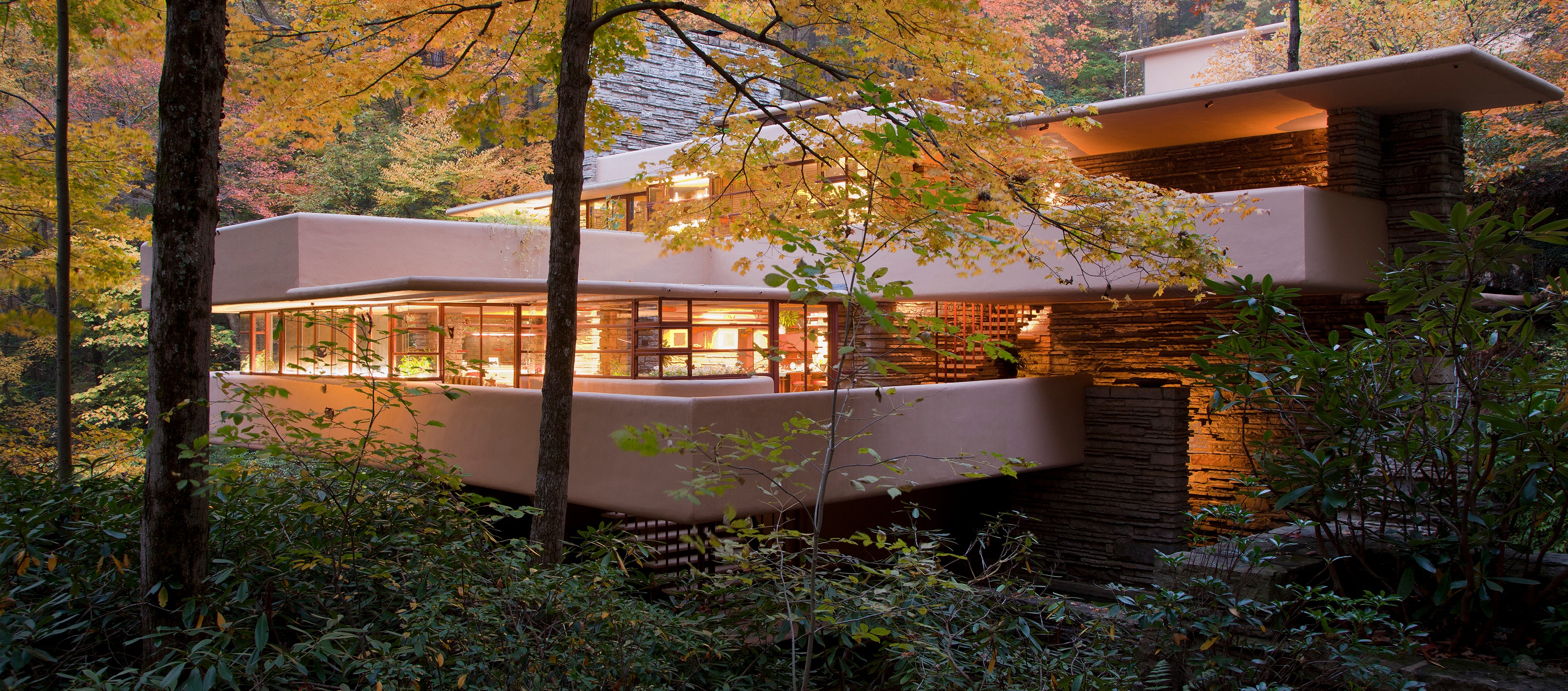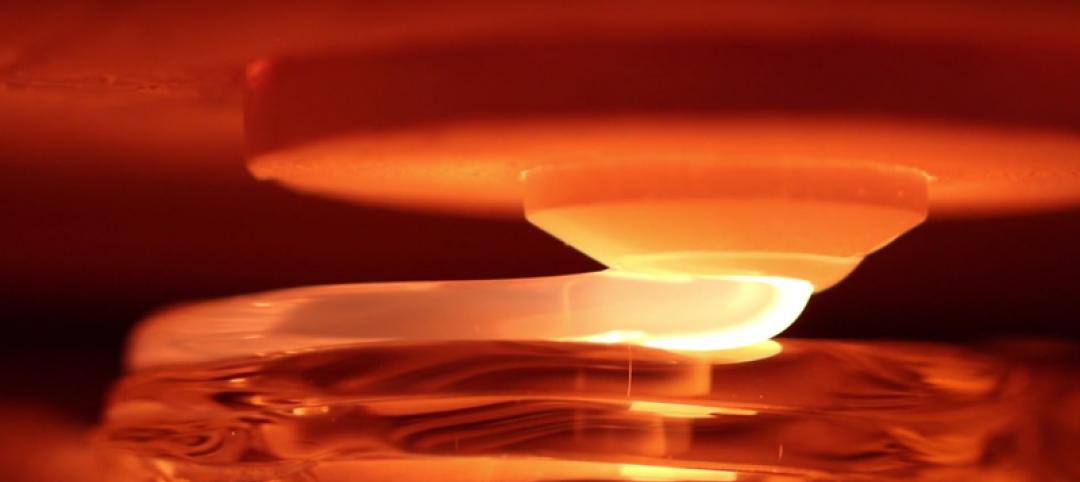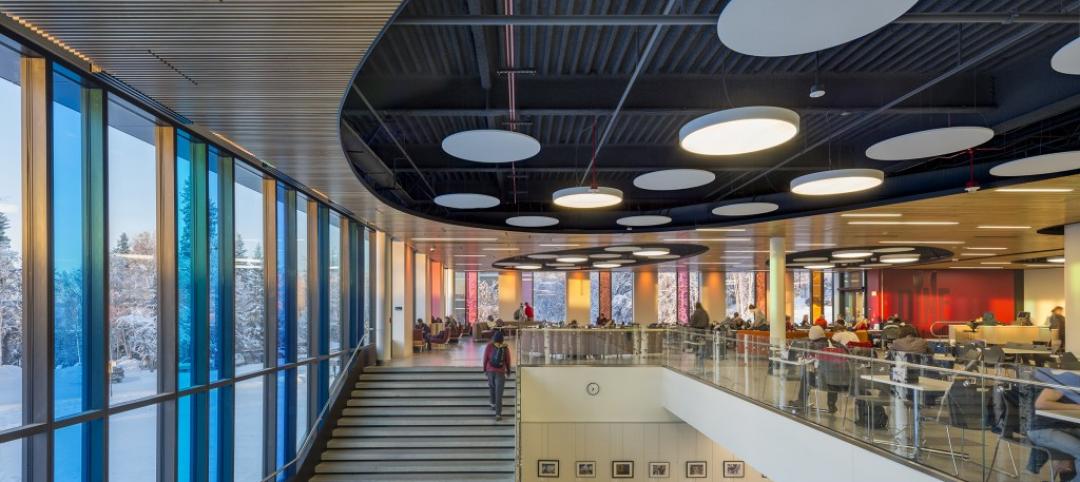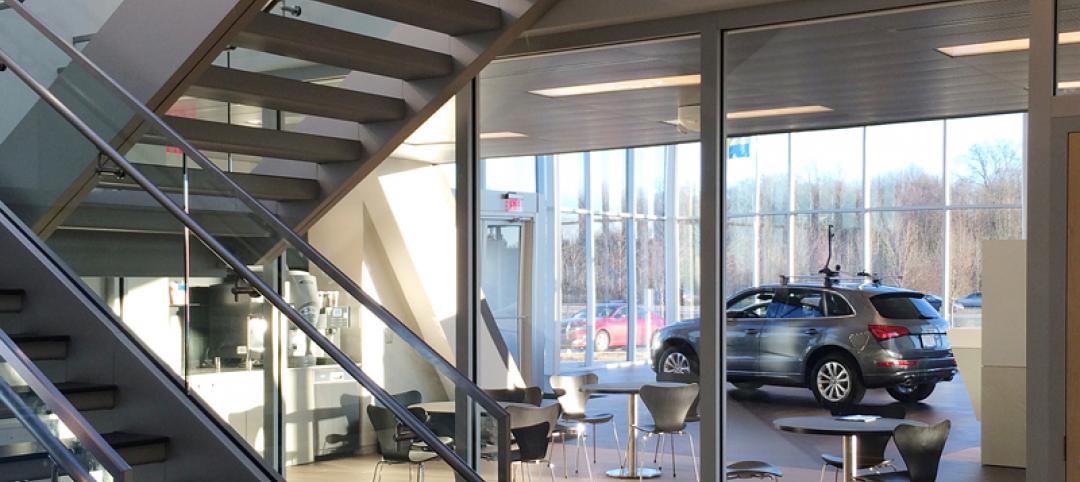In September 2019, the Western Pennsylvania Conservancy, owners of Frank Lloyd Wright’s Fallingwater, sought to complete restoration work on the window and door glass of the architect’s celebrated masterpiece. As it has done for many years, the organization turned to two trusted sources for their products and expertise: Vitro Architectural Glass (formerly PPG Glass) and Dlubak Specialty Glass Corp., a member of the Vitro Certified™ Network.
One of Wright’s primary goals in designing Fallingwater was to reduce, as much as possible, the visual barrier between the inside of the house and its iconic location above the falls of Bear Run in Pennsylvania’s Laurel Highlands. This guided Wright’s 1934 decision to specify Waterwhite glass, a low-iron glass that PPG Glass (now Vitro Glass) had recently introduced. Because Waterwhite glass is no longer made, the staff of Fallingwater today relies on its more sophisticated successor, Starphire Ultra-Clear® glass, to preserve its fabled exterior views. Manufactured by Vitro Glass using a proprietary low-iron formulation that continues to be refined, Starphire® glass has been chosen for all of Fallingwater’s window glass replacement projects over the past few decades.
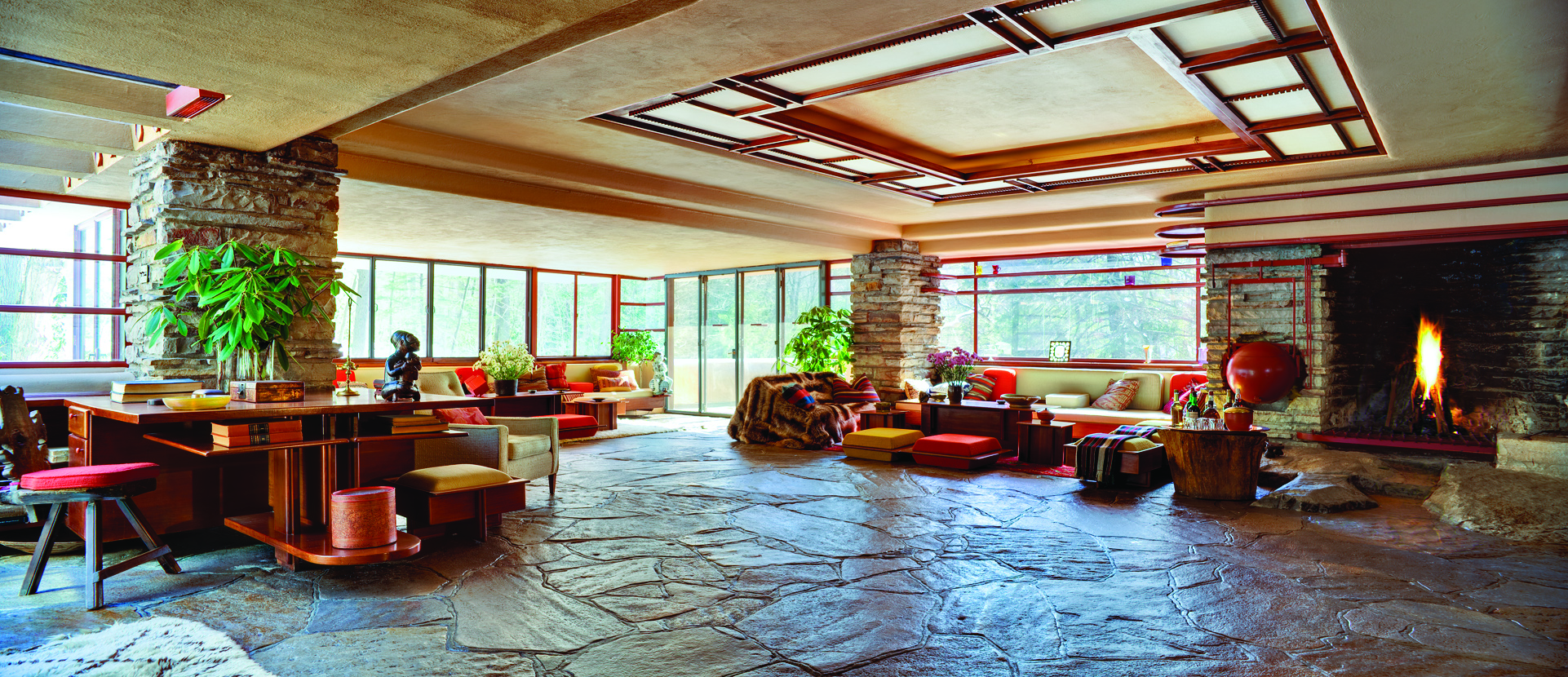 One of Wright’s primary goals in designing Fallingwater was to reduce, as much as possible, the visual barrier between the inside of the house and its iconic location.
One of Wright’s primary goals in designing Fallingwater was to reduce, as much as possible, the visual barrier between the inside of the house and its iconic location.
Photography courtesy of Western Pennsylvania Conservancy
Fallingwater is the only major work by Frank Lloyd Wright to be brought into the public domain with so much of its original furnishings and artwork intact. While regular maintenance is performed to keep it in prime condition, its caretakers work diligently to ensure that all efforts to preserve the property are made with his legacy in mind.
Window and door restoration is a continuous task, says Scott W. Perkins, director of preservation and collections for Fallingwater. “The window glass is replaced on a somewhat routine basis and usually in conjunction with steel conservation,” he explained. 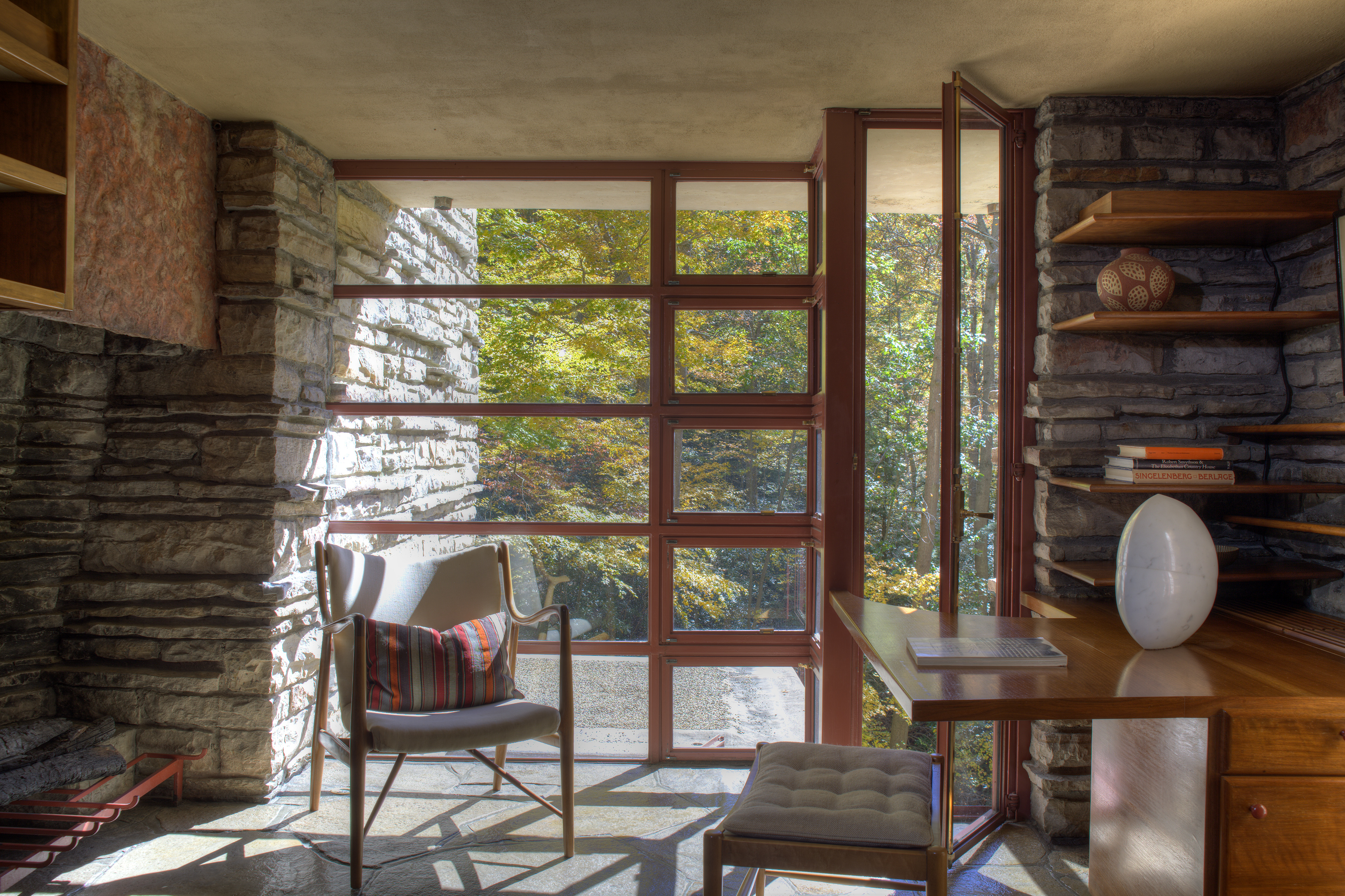
Although the last major round of window preservation took place in 2015, the Conservancy determined in September 2019 that 69 of Fallingwater’s window and door sashes needed to be repaired, including 16 windows that required complete replacement of the glass.
To enhance the strength and performance of the refurbished windows while preserving their historic integrity, the Conservancy specified Starphire® glass with a SentryGlas™ interlayer by Kuraray. In addition to offering five times the strength of ordinary laminating materials and 100 times the stiffness, the interlayer helps protect furnishings by limiting their exposure to ultraviolet (UV) light.
While the interlayer gives strength to Fallingwater’s window glass, Starphire® glass preserves its beauty. With visible light transmittance (VLT) of 91% in a standard ¼-inch (6-millimeter) thickness, Starphire® glass delivers the virtually unobstructed outdoor views Wright envisioned for Fallingwater when he first specified Waterwhite low-iron glass in 1934. “The clarity of the glass allows for it to appear invisible, a feature Wright admired,” Perkins explained.
Nearly 25 years after Starphire® glass was introduced, it remains the clearest, most transparent commercial float glass available to architects today – containing 87% less green than ordinary clear glass and offering pure, undistorted transmitted color with absolutely no grays or yellows.
To learn more and request samples, visit www.vitroglazings.com/starphire.
Related Stories
BIM and Information Technology | Aug 28, 2015
MIT researchers develop 3D printer that produces intricate glass structures
The machine uses molten glass as its “ink,” contained in a “kiln cartridge” that heats up at 1,900 degrees until it is molten and pliable.
Sponsored | Glass and Glazing | Aug 17, 2015
Specialty tempered glass??
Tempered glass is an excellent choice for large expanses of glass that maximize clear views while providing significant wind load and thermal stress resistance.
Codes and Standards | Aug 6, 2015
AAMA updates methods for testing of exterior walls
The standard specifies test methods, specifications, and field checks to evaluate structural adequacy of exterior wall systems composed of curtain walls, storefronts, and sloped glazing.
Cultural Facilities | Jul 16, 2015
Louisville group plans to build world's largest disco ball
The sphere would more than double the size of the current record holder.
Glass and Glazing | Jun 4, 2015
Construction of record breaking glass-bottom bridge nearly complete in China
Designed by Israeli architect Haim Dotan, the white bridge is meant to look as if it is “disappearing into the clouds.”
Glass and Glazing | Mar 15, 2015
Building tech breakthrough: Vacuum insulated panels keep University of Alaska students cozy in sub-zero temps
In a first-of-its-kind curtain wall installation, triple-pane VIP glass panels provide an astonishing R-40 insulation value at the university's new student union in Fairbanks.
Sponsored | Fire-Rated Products | Feb 12, 2015
State of the fire rated glazing industry
Many years have passed since my days as the “Wired Warrior,” writes SAFTI FIRST's Bill O'Keeffe. Every year at this time I reflect on just how far the fire-rated glazing industry has come.
Sponsored | | Jan 27, 2015
High-performance insulation brings design freedom, energy efficiency to urban redevelopment project
When developers of Uptown Bay City (Bay City, Mich.) began transforming the former industrial site into a mixed-use, self-sustaining riverfront community, they faced a design challenge. How could they incorporate greater expanses of glass to maximize views of the waterfront without the trade-off in energy efficiency?


